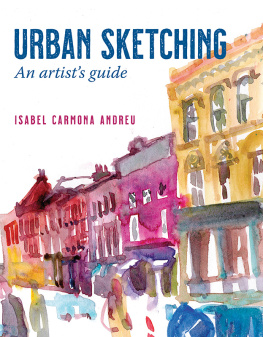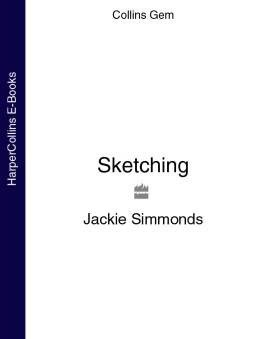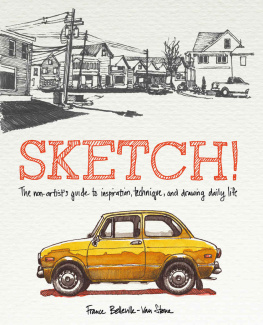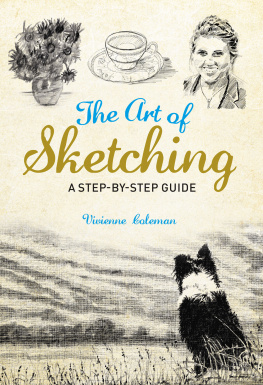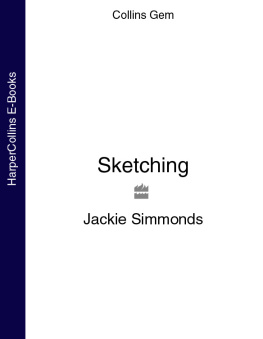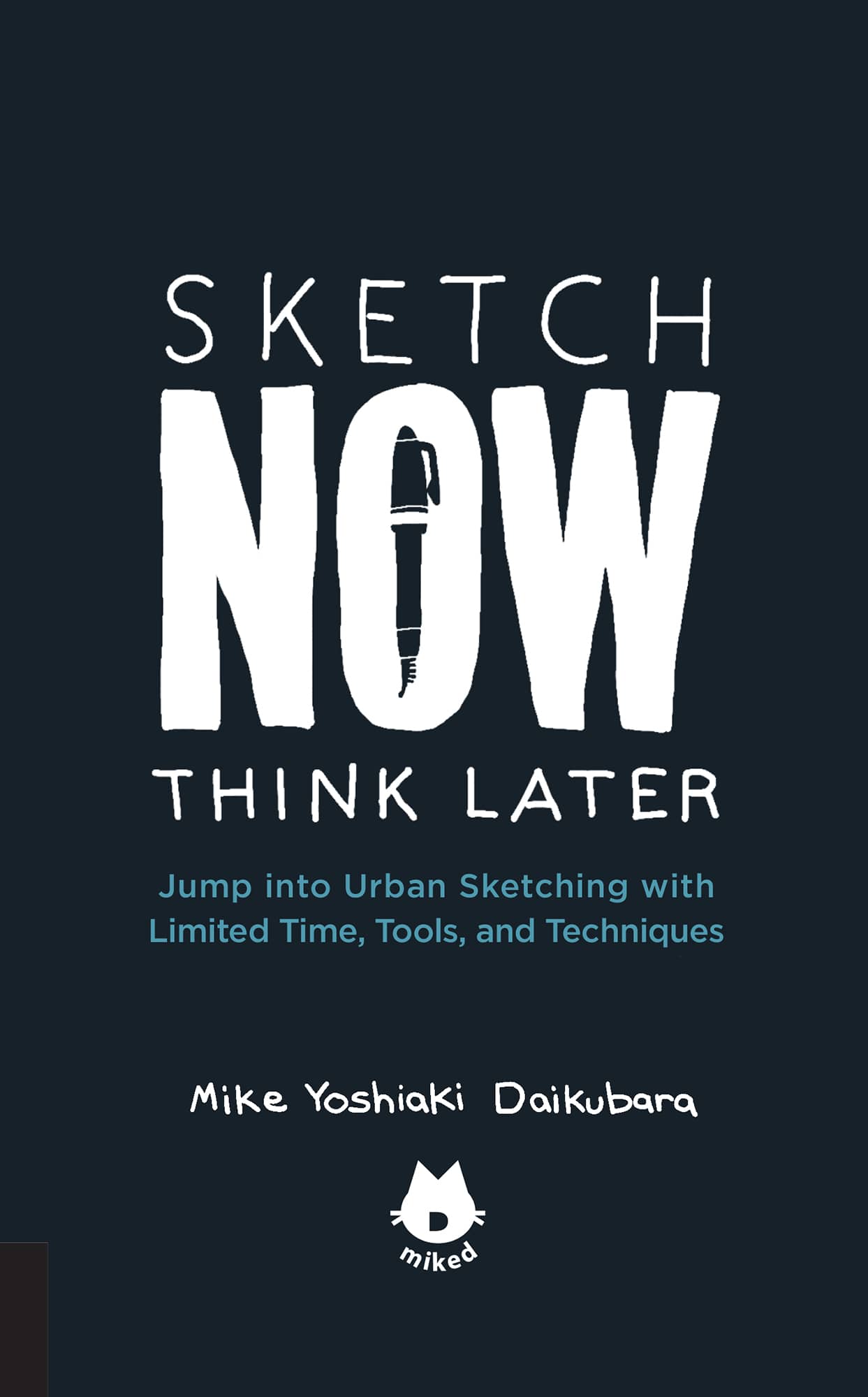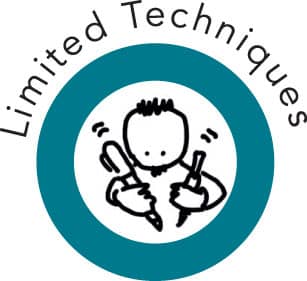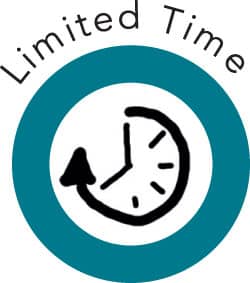SKETCH
NOW
THINK LATER
JUMP RIGHT INTO SKETCHING WITH LIMITED TIME, TOOLS, AND TECHNIQUES
MIKE YOSHIAKI DAIKUBARA
Introduction
Have you ever wanted to sketch but gave up a sketching situation since you felt you didnt know where to start or have enough time to start?
Have you ever passed up an opportunity to sketch because you were around family/friends who are nonsketchers and didnt want to make them wait for you?
Have you ever wanted to start sketching or incorporate more sketching time into your daily life but couldnt find the time to do so?
If you answered yes to any of these questions, this book is for YOU!
Perhaps you are already a sketcher, enjoying the activities of drawing on location from direct observation and you picked up this book because you want to do more of it. Or maybe you want to start sketching, but have a hard time figuring out where to start or finding the time to do it in your already busy schedule. Regardless of your skill set or level of sketching experience, the purpose of this book is to bring more sketching time into the lives of those who want to sketch.
We all have limited time in a day, but by using the tools, techniques, and tips mentioned throughout this book, I believe anyone can create memorable, great-looking, and fun sketches.
The act of sketching is a very rewarding activity. Im here to help you start to incorporate more of it into your daily life!
In the Beginning
Every sketch starts with the personal evaluation of Time and Energy level. Time is the physical time you have available and Energy is the personal energy level, which can be defined as the level of focus or concentration level you have.
When starting a sketch, ask yourself the following three questions:
1. How much time do I have?
2. How much energy (concentration level) do I have?
3. If you are with people, ask yourself: How much time are my friends/family willing to wait for me while I sketch?
When visually represented, it would look like the chart shown below (bottom left). The chart can then be broken up into four quadrants based on Time/Energy makeup (bottom right).
The following pages show the detailed explanation for each of the four quadrants.
Learning Goals of This Book
In this book, we will focus on the bottom right quadrant 4: Little Time & Lots of Energy. I will demonstrate what can be achieved even when one has little time, but lots of energy.
Some of my most favorite and personally rewarding sketches were created in this quadrant, and Ill prove to you that having little time is actually not a bad thing.
Limited Tools
Sketching with limited tools allows you to quickly approach sketching situations with ease. Keep the following in mind when selecting which tools to keep on hand:
Know what you carry and where
Use minimal yet portable tools
Become comfortable using every tool
Limited Techniques
Sketching with limited techniques allows you to capture the moment faster. Remember to:
Jump right into sketching
Capture what you see and what you feel automatically
Dont overthink; you know what to do
Limited Time
Sketching with limited time produces better-looking work, since it pushes you to concentrate harder in the time you have.
Allows for more focus and concentration
Friends and family do not have to wait for you
Fits into a busy schedule
01 Tools Overview
I used the following five tools to create most of the sketches shown in this book. All of the tools fit inside a small bag that I carry with me all the time, allowing me to never miss a sketching opportunity.
On the following pages, I will explain why these tools have worked for me. While they may not work for everyone, I believe these tools have elements that will help you in your sketching activity.
The goal is to stick to a basic set of tools that you can use daily and carry with you at all times. Establishing this tool set will also allow you to focus on the sketching portion rather than spending time selecting tools or setting up. Within a moments notice, youll be able to sketch NOW!
There might be times you may want to experiment with various tools and techniques, and thats great, but in this book well be focusing on capturing the NOW.
My Tool Kit
I use these five items for most of my sketches.
1. Sketchbook
2. Fountain pen
3. Watercolor kit
4. Water brush
5. Spray mister
Sketchbook
A sketchbook is one of the most important art supplies you will be carrying with you on your sketching journey.
Here are couple important points to think about when picking out a sketchbook:
1. Size: It should be small enough to easily carry around, yet large enough to capture your desired image.
2. Format: Sketchbooks come in landscape, portrait, and square.
3. Binding type: bounded book, spiral bound, accordion, and loose paper.
4. Paper type: coarse, medium, smooth, vellum. Try experimenting to see which types work best with your art medium of choice.
5. Price: The sketchbook shouldnt be so expensive that you are intimidated about the idea of making a mistake on the pages.
A sketchbook is where you are free to do anything youd like, and it should feel that way. It should feel comfortable in your hands, and most of all you should enjoy every moment spent putting down marks in your book.
Over the years I have tested numerous types of sketchbooks. My current favorite is the Alpha Series, manufactured by Stillman & Birn, 10" & 7" (25.4 cm & 17.8 cm) wire-bound landscape format. There are many decisions to make in terms of paper type, size, and spine/no spine, etc. Experiment and pick one that best works for you, then stick to using that size for some time.


